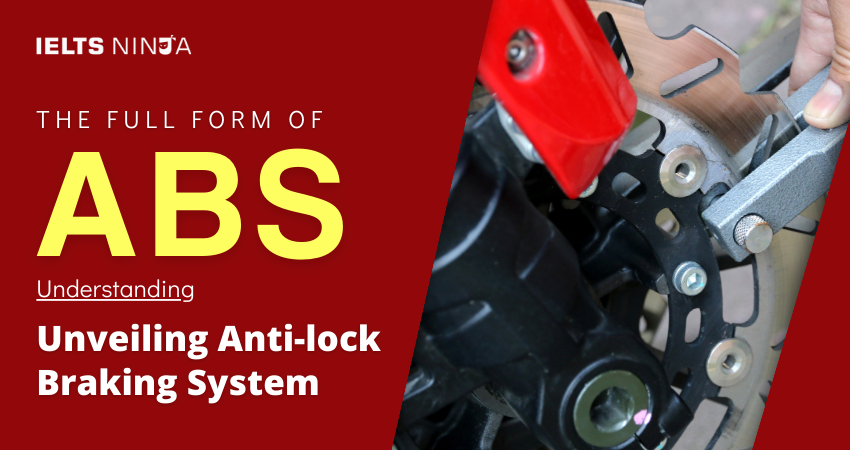In the realm of automotive safety and technology, “ABS” is a significant abbreviation. The full form of ABS, which stands for Anti-lock Braking System, is a crucial component in modern vehicles that enhances braking performance and driver control in critical situations. In this comprehensive guide, we will explore the details of ABS, how it works, and its importance in ensuring safer road travel.
What is ABS?
The “Anti-lock Braking System” (ABS) is an advanced safety feature installed in vehicles to prevent wheel lockup during sudden or hard braking. It is designed to help drivers maintain steering control and avoid skidding, especially on slippery or uneven road surfaces. ABS is a fundamental component of modern vehicle safety systems.
How ABS Works?
ABS operates based on a combination of sensors, valves, and a control unit. Here’s how it works:
Wheel Speed Sensors:
ABS-equipped vehicles have sensors at each wheel that monitor the speed of rotation. These sensors send real-time data to the ABS control unit.
Monitoring Wheel Deceleration:
The ABS control unit continuously monitors the deceleration rate of each wheel. If it detects a sudden and significant decrease in wheel speed, indicating potential wheel lockup, it takes action.
Pulse Modulation:
To prevent wheel lockup, the ABS control unit modulates the brake pressure at each wheel by rapidly opening and closing the brake’s hydraulic valves. This pulsating action reduces braking force momentarily, allowing the wheel to continue rotating.
Steering Control:
As a result of the pulsating brake pressure, the driver can maintain steering control even under heavy braking. This is crucial for avoiding obstacles or steering around hazards.
Repeat Process:
ABS continuously repeats this process, adjusting brake pressure as needed, until the vehicle comes to a controlled stop or the driver releases the brake pedal.
Benefits of ABS
Anti-lock Braking Systems offer several key advantages:
- Enhanced Control: ABS prevents wheel lockup, allowing drivers to steer around obstacles while braking.
- Reduced Stopping Distance: ABS can reduce stopping distances on slippery surfaces, potentially preventing accidents.
- Improved Traction: It helps maintain tire traction on slippery or uneven roads, reducing the risk of skidding.
- Stability: ABS enhances vehicle stability during hard braking, reducing the likelihood of rollovers.
- All-Weather Performance: ABS is particularly beneficial in adverse weather conditions, such as rain, snow, or ice.
यह भी पढ़ें: सर्वश्रेष्ठ ऑनलाइन आईईएलटीएस कोचिंग एवं प्रशिक्षण अकादमी
Limitations of ABS
While ABS is a valuable safety feature, it has some limitations:
No Guarantee:
ABS cannot guarantee that a vehicle will stop within a specific distance; stopping distance also depends on tire condition and road surface.
No Substitute for Safe Driving:
ABS complements safe driving practices but does not replace them. Drivers should maintain a safe following distance and adjust their speed to road conditions.
Tire Condition Matters:
The effectiveness of ABS is influenced by tire condition. Worn or improperly inflated tires can affect braking performance.
Terrain Matters:
ABS may not prevent accidents in all situations, such as very steep downhill slopes or extremely slippery surfaces.
Importance of ABS
Anti-lock Braking Systems are crucial for road safety. They help prevent accidents, reduce the severity of collisions, and provide drivers with better control over their vehicles in emergency situations. ABS has become a standard feature in most modern vehicles, contributing to safer road travel for everyone.
निष्कर्ष
The Anti-lock Braking System (ABS) is a vital safety feature in modern vehicles that prevents wheel lockup during hard braking, enhancing driver control and safety. Its ability to reduce stopping distances and maintain steering control is essential for avoiding accidents, especially in adverse road conditions. As vehicles continue to incorporate advanced safety technologies, ABS remains a fundamental component in ensuring safer road travel for all.








